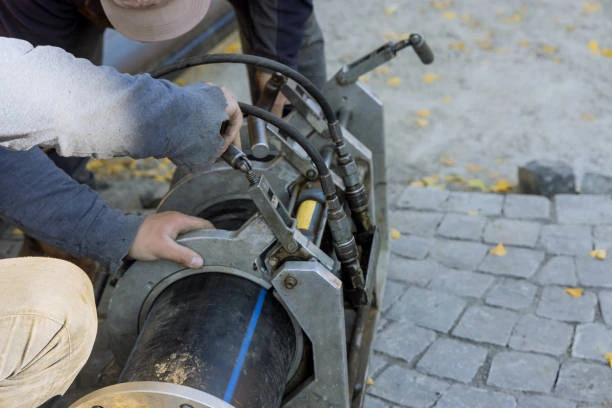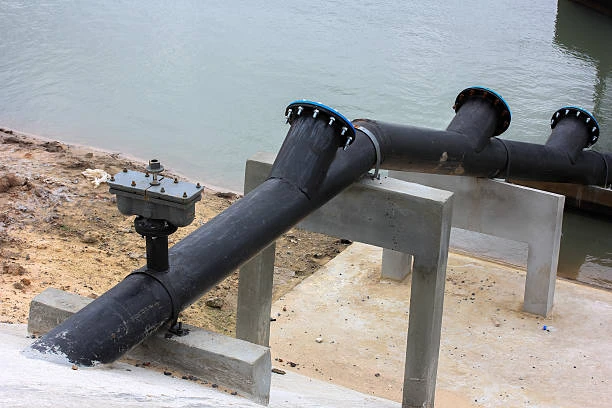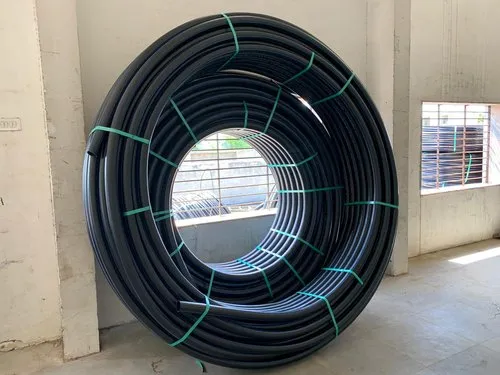Introduction
In the world of pipe and profile extrusion, the landscape is evolving rapidly. As industries demand better quality, stronger materials, and more efficient manufacturing processes, extrusion technology is adapting to meet these needs. From advancements in machinery to new materials and applications, pipe and profile extrusion is a dynamic field. This article highlights the recent developments and innovations in pipe and profile extrusion, with a focus on new trends and technologies that are shaping the future of this industry.
What is Pipe and Profile Extrusion?
Pipe and profile extrusion is a process that involves forcing material, typically plastic, through a mold to create continuous shapes or profiles. These shapes can be pipes, tubes, or various other profiles used in construction, plumbing, and a variety of industrial applications. We can use the extrusion process for a wide range of materials, including thermoplastics such as PVC, HDPE, and PP, among others.
The extrusion process itself is simple but highly versatile. It involves melting plastic and then forcing it through a die to create the desired shape. As the material exits the die, we cool and solidify it, resulting in a continuous profile. We can further customize the process for different applications by adjusting temperatures, speeds, and tooling.
Recent Trends in Pipe and Profile Extrusion
The pipe and profile extrusion industry is seeing several notable trends that reflect the growing demands for efficiency, sustainability, and product innovation. Below are some of the key trends that are currently shaping the industry:
1. Automation and Smart Manufacturing
Automation is one of the most significant trends in pipe and profile extrusion. Manufacturers are increasingly adopting automated systems to improve efficiency, reduce labor costs, and ensure consistent quality. Smart extrusion systems with sensors, artificial intelligence, and real-time monitoring enable manufacturers to optimize the process, detect defects early, and adjust parameters as needed.
The integration of automation allows for better control over the extrusion process. With real-time data collection and analysis, manufacturers can track parameters like temperature, pressure, and material flow. Automated systems can adjust settings on the fly to ensure that each batch of pipe and profile meets the desired specifications, reducing waste and improving overall product quality.
2. Focus on Sustainability
Sustainability is a growing concern in the manufacturing industry, and pipe and profile extrusion is no exception. As the demand for environmentally friendly products increases, manufacturers are focusing on developing sustainable materials and processes. Recycling and the use of biodegradable plastics are key components of this trend.
Many manufacturers are now using recycled PVC and other recycled polymers in their extrusion processes. By using recycled materials, companies can reduce the environmental impact of their products and contribute to a circular economy. Additionally, the use of bioplastics and other sustainable materials is gaining traction in the pipe and profile extrusion industry.
Extrusion equipment is also becoming more energy-efficient. Modern machines use less energy, reduce waste, and lower overall operational costs. This shift towards sustainable manufacturing practices helps companies meet environmental regulations and customer demand for eco-friendly products.
3. Innovations in Materials for Pipe and Profile Extrusion
Another key trend in pipe and profile extrusion is the continuous development of new materials. Manufacturers are constantly searching for materials that offer better performance, durability, and cost-effectiveness. Recent innovations include:
- High-Density Polyethylene (HDPE): HDPE is becoming increasingly popular for pipe extrusion due to its excellent chemical resistance, flexibility, and durability. It’s widely used in water, gas, and sewage systems.
- Polypropylene (PP): PP is gaining traction for its resistance to fatigue, chemicals, and high temperatures. It’s commonly used in industrial and chemical piping systems.
- Composite Materials: Composite pipes made from a blend of different materials, like fiberglass-reinforced plastic (FRP), offer superior strength and corrosion resistance. These are often used in high-pressure applications.
- Recyclable Materials: There’s a growing focus on recyclable plastics like PVC and PE. These materials are being used in pipe and profile extrusion to reduce waste and lower the environmental footprint.
4. Increased Demand for Customization
As industries demand more specialized solutions, the need for customized pipe and profile extrusion has increased. Manufacturers are now able to produce pipes and profiles in a variety of shapes, sizes, and colors to meet specific customer requirements.
Industries like construction, infrastructure, and automotive drive this trend, as they require customized piping solutions to meet unique design and functionality needs. Manufacturers are investing in more flexible extrusion systems that can produce a wide range of profiles, from standard round pipes to complex geometric shapes.
5. 3D Printing in Pipe and Profile Extrusion
3D printing, or additive manufacturing, is starting to make its way into the pipe and profile extrusion industry. While the technology is still in its early stages, it holds significant potential for custom extrusion applications. 3D printing allows manufacturers to produce highly customized profiles with complex geometries that would be difficult or impossible to achieve with traditional extrusion methods.
For example, in industries such as construction or medical equipment, 3D printing can create custom pipes that fit into tight spaces or meet specific structural requirements. The ability to prototype designs quickly and cost-effectively is a major advantage for businesses adopting this technology.

Innovations in Extrusion Machines and Equipment
Advancements in extrusion machinery are also contributing to the growth of pipe and profile extrusion. Recent innovations in equipment design include:
1. Energy-Efficient Extruders
Newer models of extrusion machines are designed to use less energy while maintaining high output. These energy-efficient extruders are helping companies reduce their operational costs and environmental impact.
2. Multi-Layer Extrusion Systems
Multi-layer extrusion systems are becoming increasingly popular in the production of pipes. These systems allow manufacturers to create pipes with different material layers, each offering unique properties. For example, a pipe might have a layer of high-density polyethylene (HDPE) on the inside for chemical resistance and a PVC outer layer for durability and strength.
3. Inline Quality Control
Inline quality control systems are now integrated into extrusion lines to continuously monitor and measure the pipe and profile during production. This allows us to detect defects such as dimensional inaccuracies, surface imperfections, and wall thickness variations immediately, minimizing waste and improving product quality.
The Impact of Pipe and Profile Extrusion on Various Industries
Pipe and profile extrusion technology has a broad range of applications across different industries. Below are some key sectors benefiting from these innovations:
1. Construction and Infrastructure
The construction industry relies heavily on pipe and profile extrusion for various applications, such as water and gas distribution, sewage systems, and stormwater management. Stronger, more durable materials and customizable profiles enable construction projects to be completed more efficiently and safely.
2. Automotive
In the automotive industry, pipe and profile extrusion is used to create components such as fuel lines, coolant pipes, and air ducts. The customization capabilities of extrusion allow manufacturers to create parts with specific geometries and material properties, contributing to lighter, more efficient vehicles.
3. Agriculture
In agriculture, pipe and profile extrusion is used to create irrigation pipes, drainage systems, and other agricultural infrastructure. The ability to produce pipes with different materials and configurations is crucial for meeting the needs of modern farming techniques.
4. Medical and Pharmaceutical
The medical industry also benefits from pipe and profile extrusion for creating components like medical tubing and specialized profiles. The precision offered by extrusion is critical in applications where accuracy and material performance are paramount.
Conclusion
The pipe and profile extrusion industry is evolving rapidly, driven by innovations in materials, machinery, and manufacturing techniques. Automation, sustainability, and customization are the key trends shaping the future of extrusion technology. Advancements in energy-efficient systems, 3D printing, and multi-layer extrusion equip the industry to meet the growing demands for high-quality, durable, and eco-friendly piping solutions. As industries continue to evolve, pipe and profile extrusion will play a crucial role in supporting infrastructure development across sectors.
Frequently Asked Questions (FAQ)
1. What is pipe and profile extrusion?
Pipe and profile extrusion is the process of creating continuous shapes or profiles, such as pipes, from plastic materials. The material is forced through a mold to create the desired shape.
2. What materials are commonly used in pipe and profile extrusion?
Common materials include PVC, HDPE, PP, and other polymers. These materials are selected based on the application’s requirements for strength, flexibility, and durability.
3. How does automation improve pipe extrusion?
Automation in pipe extrusion enables better process control, real-time monitoring, and faster adjustments. This results in higher efficiency and improved product consistency.
4. Why is sustainability important in pipe and profile extrusion?
Sustainability reduces environmental impact by using recyclable materials and energy-efficient processes. The focus on sustainability helps manufacturers meet industry regulations and consumer demand for eco-friendly products.
5. What are the benefits of multi-layer extrusion systems?
Multi-layer extrusion allows for the production of pipes with different material properties in each layer. This enhances performance by combining the strengths of various materials, such as chemical resistance and durability.


















